#Frederick I of Württemberg
Text
On this Day: Vienna Congress Edition
September 22th, 1814
Political
King Frederick I of Württemberg arrives.
King Frederick VI of Denmark arrives.
Grand Duchess Marie of Weimar arrives (Incognito).
The Meeting of "The Four" Occurs regarding first protocol and a discussion on procedures.
Other
N/a
#historical#Series: On this Day#vienna congress#Frederick I of Württemberg#Frederik vi#frederick vi#Grand Duchess Marie of Weimar#queued
0 notes
Text


Three Years Anniversary: Wilhelmina and Family, 1850.
Queen Wilhelmina with her husband Prince Leopold of Orange and Parma, alongside their seven children and children in laws.
This weekend was my three year anniversary of a Royal Sims account, so I have done another historical portrait to celebrate it! It has been an incredible experience over these last three years and I am so grateful for everyone I have met and worked with. I would like to thank all of my friends and followers for supporting me on this amazing journey!❤️ (tagged bellow)
Standing(L-R) Archduke Joseph of Austria, Prince Albert, Duke of Clarence, Princess Helena of Denmark, Duchess of Clarence, Karl-Frederick, Emperor of the Germans, Princess Leanor of Bavaria, Crown Princess of Corrilea, Prince Leopold of Orange and Parma, the Prince Consort, Crown Prince David of Corrilea, Frederich I, King of Württemberg, Prince Edward, Duke of Marlborough, Princess Beatrice of the United Kingdom, Duchess of Marlborough, and Grand Duke Sergei Nikolaevich of Russia.
Seated(L-R) Princess Louise, Archduchess Louise of Austria, Princess Sybil, Empress of the Germans, Queen Wilhelmina of Corrilea, Princess Victoria, Queen of Württemberg and Princess Catherine, Princess Royal, Grand Duchess Catherine Feodorovna of Russia.
Thank you @funkyllama @nexility-sims @royaltysimblr @trentonsimblr @bridgeportbritt @itsmelonsloth @thegrimalldis @wa-royal-tea @warwickroyals @the-royals-ts4 @armoricaroyalty @houseofwindensor @theroyalthrones @whitmoreroyals @empiredesimparte @royalhouseofcarrington @officalroyalsofpierreland @anachrosims @thebaillieroyals for creating a wonderful experience for me these past three years ❤️
#theroyalsofcorrilea#anniversary#ts4 royalty#ts4 royal family#sims 4 royalty#the sims 4#ts4 royal story#sims 4#sims 4 royal family#sims 4 royal simblr#sims 4 royal legacy
47 notes
·
View notes
Text

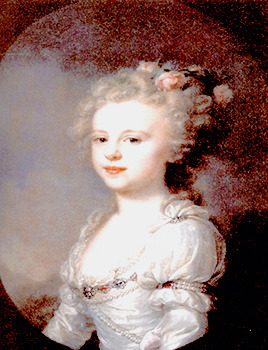

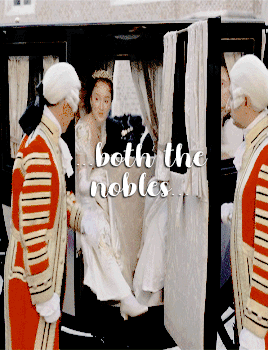
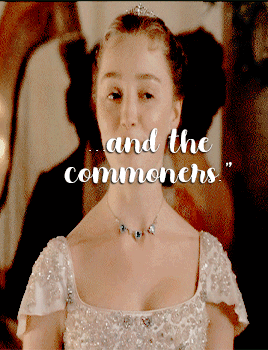
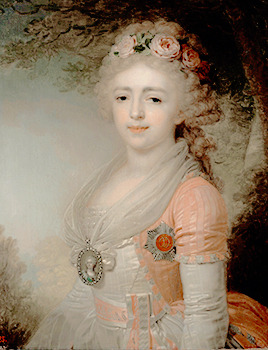
"In 1799, three years after her failed betrothal with the King of Sweden, another marital project originated for Alexandra. Previously in 1798, Dukes Ferdinand Augustus and Alexander Frederick of Württemberg who were the brothers of the Empress Maria Feodorovna, arrived in St. Petersburg to serve in the Russian army. They expressed the interest of Austria to join with Russia in a coalition against the rising power of the French Republic and Napoleon, and to cement this alliance, it was decided to arrange a marriage between Alexandra and Archduke Joseph of Austria, Palatine (Governor) of Hungary and a younger brother of Francis II, Holy Roman Emperor. Archduke Joseph personally came to Russia to see his bride. The meeting between them was successful. In mid-February 1799 the betrothal ball was held. Later, a marriage contract was signed in which Alexandra would be allowed to kept her Russian Orthodox faith. In October, Count Fyodor Rostopchin wrote:
"Believe me, that's not good started to strengthen the alliance with the Austrian court by ties of blood... Of all the sisters she will be given the least successful marriage. She will have nothing to wait for, and her children even more so."
On 25 September 1799, a decree was published about the royal title of Alexandra. In Russia, she was referred to as "Her Imperial Highness Grand Duchess the Archduchess of Austria" with the French prefix of "Palatine d'Hongrie". The wedding took place on 30 October 1799 at Gatchina Palace, one week after the wedding of her sister Elena. To celebrate both events, poet Gavrila Derzhavin wrote the ode "the wedding celebrations of 1799". On 21 November the couple went to Austria. Countess Varvara Golovina remembered that Alexandra was sad to leave Russia, and her father Emperor Paul I "constantly repeated, would not see her since her sacrifice." According to Alexandra's confessor, Andrei Samborski, Alexandra was given a cold reception in Vienna. However, other sources offer a different view. Queen Maria Carolina of Naples (the Emperor's mother-in-law) and her daughters arrived in Vienna in August 1800 for a long stay. Maria Carolina's daughter, Princess Maria Amalia of Naples, wrote in her journal that on 15 August the Queen and her daughters were introduced to Alexandra, whom she described as "very beautiful". Maria Amalia and Alexandra became friends during this time; and the Princess of Naples wrote in her journal that the Russian Grand Duchess and her husband had a friendly relationship with the rest of the imperial family and took part in the family gatherings, parties and balls in Vienna, which contrasts with the version given by Andrei Samborski. For instance, in January 1801, Maria Amalia wrote in her journal that the imperial family used to attend balls in Archduke Joseph's residence in Vienna, where "beautiful Alexandra, always serious and sad, has a magnificent household." When she was presented to Emperor Francis II, she reminded him of his first wife Elisabeth of Württemberg, who was her maternal aunt; this caused the jealousy of Empress Maria Theresa, Francis II's second wife, who also was envious of Alexandra's beauty and fine jewelry. Imperial confessor Andrew Samborski wrote:
"Remembering the happy cohabitation with her led him (the Emperor) in extreme confusion of mind which afflicted the heart of the Empress, his present wife. After this, she became in the innocent victim of the Empress' implacable vengeance...The Empress not forgotten and humiliated her parents and siblings when she called them a family of freaks, due to the treatment that Grand Duke Constantine gave to his wife."
Once, Alexandra turned up to a ball beautifully dressed, with magnificent jewellery. The Empress was incensed at being upstaged by the Archduchess, and ordered her to remove her jewellery, and also told her that she could no longer wear them. Heeding her instructions, Alexandra only decorated her hair with flowers when she attended a play some time later. The flowers highlighted her beauty, leading her to be applauded and being given a standing ovation, making Maria Theresa even more furious. Archduke Joseph could not protect his wife from these attacks. Furthermore, her Eastern Orthodox faith aroused the hostility of the Roman Catholic Austrian court, who urged her to convert. Pavlovna was popular among Hungarians, both the nobles and the commoners. According to the legend, it was her suggestion to add the color green as the third color to the flag of Hungary. Hungarians had been using red and silver, then red and green as their national colors for centuries at the time. However, in the late 18th century, a third color was proposed to be added to the flag, to follow the style of the French tricolor. Pavlovna suggested green as a symbol for hope. By the mid-19th century, the red-white-green Hungarian tricolor became widespread.
Wikipedia of Grand Duchess Alexandra Pavlovna.
84 notes
·
View notes
Text
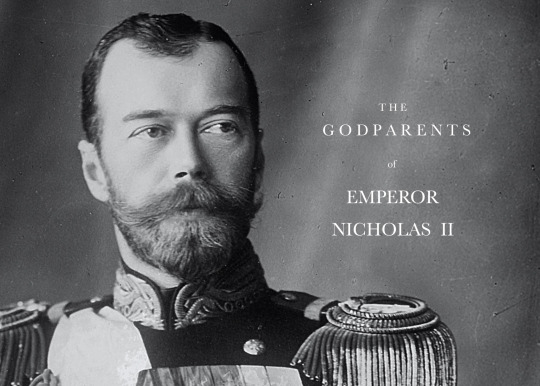


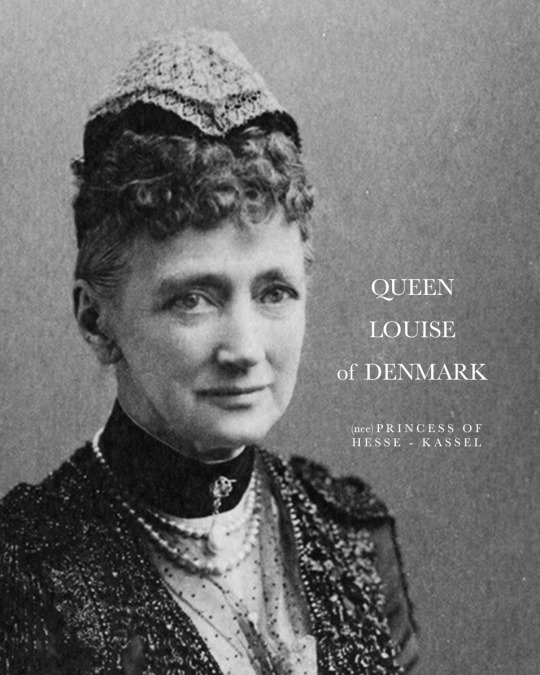

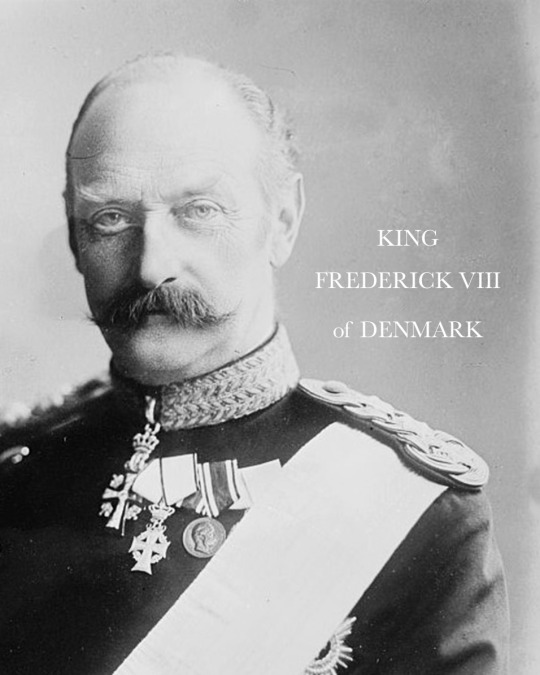
GODPARENTS OF NICHOLAS II
Born during his grandfather's reign on 18 May (New Style) 1868 at the Alexander Palace, Tsarkoe Selo in Saint Petersburg. He was the eldest son of Alexander III and his wife Maria Feodorovna (then, the Tsarevich and Tsarina of Russia). He was christened on 1 June at the Chapel of the Resurrection of the Catherine Palace at Tsarskoe Selo, by the confessor of the imperial family, protopresbyter Vasily Borisovich Bazhanov. His godparents were:
ALEXANDER II, EMPEROR OF RUSSIA - his paternal grandfather, the Russian Emperor stood as one of the godparents. He became the Emperor of All Russia in 1855. Alexander’s most significant reform as emperor was the emancipation of Russia’s serfs in 1861, for which he is known as Alexander the Liberator. He was assassinated in 1881 when the young Nicholas was only 12 years-old, to which he became the heir apparent upon his death.
PRINCESS MARIE OF HESSE AND BY RHINE, EMPRESS MARIA ALEXANDROVNA OF RUSSIA - his paternal grandmother, the consort of Emperor Alexander II, was another of his godparents. Known for her intellect, she was one of the founders of the Russian Red Cross Society. However, she suffered from tuberculosis from 1863 and spent long stays in southern Europe to avoid harsh winters. Although she and her husband were unofficially separated sometime after the death of their eldest son, Maria was treated with respect and love by her surviving family. Maria passed away from illness when the young Nicholas was still a child.
PRINCESS LOUISE OF HESSE-KASSEL, QUEEN CONSORT OF DENMARK - his maternal grandmother was listed as one of his godparents. Louise became the Queen consort of Denmark upon her husband's - King Christian IX - accession in 1863, just few years before her grandson Nicholas' birth. She, herself, was a niece of another King of Denmark (Christian VIII). The great dynastic success of Louise's six children was to a great extent a result of Louise's own ambitions - through them, she was a grandmother of not only the future Tsar of Russia (Nicholas II), but also that of King George V of the United Kingdom; King Constantine I of Greece; King Christian X of Denmark, and King Harken VII of Norway.
GRAND DUCHESS ELENA PAVLOVNA OF RUSSIA - his great-great-aunt, the wife of the late Grand Duke Michael Pavlovich, was one of his godparents. Born as Princess Charlotte of Württemberg, she became a close friend of his grandmother the Empress Maria Alexandrovna, and was known as an intellectual. She was also considered the most exceptional woman in the imperial family since Catherine the Great.
KING FREDERICK VIII OF DENMARK - then, the Crown Prince, his maternal uncle stood as one of his godparents. During the long reign of his father, he was largely excluded from influence and political power. Upon his father's death in 1906, he acceded to the throne at the advanced age of 62. In many ways, Frederick VIII was a liberal monarch who was much more favorable to the new parliamentary system introduced in 1901 than his father had been, being reform-minded and democratically inclined.
Source
85 notes
·
View notes
Text
‘A Beacon of Hope’: Indigenous People Reunited With Sacred Cloak In Brazil
Denmark Sends 300-Year-Old Feathered Cloak Considered An Ancestor By Tupinambá de Olivença to Rio
— Tiago Rogero | Rio de Janeiro, Brazil 🇧🇷 | Thursday 12 September 2024

The Cloak will be Publicly Unveiled at a Ceremony on Thursday. Photograph: Niels Erik Jehrbo/Nationalmuseet
The scene resembled a funeral: seven Indigenous people, overcome with tears, gathered around a loved one resting in a coffin-like wooden box. Instead of grief, however, it was a moment of celebration: the long-awaited reunion between the Tupinambá de Olivença people and a sacred feathered cloak that was taken from Brazil at least 335 years ago.
The relic – which the Indigenous people consider not as an object but as an ancestor – had been at Denmark’s National Museum until July, when it was sent to Rio de Janeiro.

Chief Jamopoty and six other Representatives of the Tupinambá de Olivença people reunited for the first time with the cloak taken from Brazil at least 335 years ago. Photograph: Tiago Rogero/The Guardian
It will be publicly unveiled at a ceremony at Brazil’s National Museum on Thursday attended by President Luiz Inácio Lula da Silva. But the first private encounter between the Tupinambá of Olivença and the cloak took place on Sunday, in an intimate moment witnessed by the Guardian.
The reunion had been eagerly anticipated: after the cloak’s return to Brazil, the Indigenous group had complained that they were not initially given the chance to perform their reception rituals for the sacred relic, which they refer to in the same terms they would to a person.
“We spoke to him, and he responded,” said Cacique Maria Valdelice Amaral de Jesus, 62, known as Jamopoty Tupinambá.

About 200 Tupinambá de Olivença made the 1,250km journey from their land in Bahia to Rio de Janeiro and have been camping near the National Museum. Photograph: Tiago Rogero/The Guardian
Jamopoty said the cape had returned to resolve the numerous land disputes threatening Indigenous communities across Brazil, adding: “He said we must have our lands demarcated.”
She was joined in the temperature-controlled room by six other representatives of the Tupinambá de Olivença, who for about 20 minutes prayed and spoke to the cloak, which lay under an oxygen-free glass dome, as technicians carefully monitored the humidity.
Jamopoty’s remarks were recorded by the documentary director Carina Bini who, with the Indigenous leader’s consent, shared them with the Guardian.
“You’re lying down, but you’ll stand up. We came to visit you,” she said.
“I don’t even have words. It’s the most beautiful thing I have ever seen,” she said as tears ran down her face, which was painted with the red dye of annatto seeds.
Her partner, Averaldo Rosario Santos, told the cloak that its return was “a beacon of hope for all the Indigenous peoples that remain in this once-invaded Brazil.”

Maria Valdelice Amaral de Jesus, 62, known as Jamopoty Tupinambá. Photograph: Tiago Rogero/The Guardian
Tupinambá cloaks – typically made from thousands of scarlet ibis feathers – were used as ceremonial vestments by coastal Indigenous peoples, said Amy Buono, an assistant professor of art history at Chapman University.
“These capes probably functioned as supernatural skins, transferring the vital force from one living organism to another,” said Buono, who has studied this cloak and 10 others still in European museums in Denmark, Italy, France, Belgium and Switzerland.
“Tupinambá capes were some of the most sought-after artefacts in the early 16th century,” she said. Several Tupinambá cloaks were worn by the courtiers during a 1599 procession at the court of the Duke of Württemberg in Stuttgart.
The newly returned cloak was first inventoried by Denmark in 1689 as part of the collection of Frederick III, possibly after it was taken from Brazil by Dutch forces, which occupied the state of Pernambuco from 1630 to 1654.
“When the cloak was taken from us, it weakened our community,” said Jamopoty.

A Parade in Stuttgart at the Court of Duke Frederick I of Wurttemberg in 1599. Photograph: Album/Alamy
The Tupinambá de Olivença’s fight for the cloak’s repatriation began in 2000 when it was loaned for an exhibition in São Paulo. Jamopoty’s mother, Nivalda Amaral de Jesus, who was known as Amotara, visited the exhibit and demanded its return to Brazil.
At the time, the Tupinambá were not even officially recognised as an Indigenous people – they were even described as extinct in history books.
Under pressure from Amotara (who died in 2018) and other leaders, the Tupinambá de Olivença were finally recognised in 2001 by the Brazilian government.
Eight years later, the first step was taken towards demarcating their territory – an area of 47,000 hectares spanning three municipalities in Bahia.
Since then, however, the Brazilian government has made no further progress in mapping their territory, which has led to land grabs by cocoa farmers and tourism developers.

Indigenous Leaders Frustrated Despite Cloak’s Return to Brazil after 300 Years! Denmark returns artefact but Tupinambá leaders say they were prevented from performing the necessary rituals to receive sacred relic. Cloak is made with about 4,000 Red Feathers of the Scarlet Ibis Bird was first inventoried by Denmark in 1689, but some believe it was taken from Brazil nearly 50 years before. Photograph: Niels Erik Jehrbo/Nationalmuseet

‘We Wanted To Perform Our Rituals, With Songs and Incense Using Our Herbs … It would have been a Special Moment for Strengthening Our Identity,’ said the Chief of Tupinambá de Olivença People. Photograph: Niels Erik Jehrbo/Nationalmuseet
About 200 Tupinambá de Olivença made the 1,250km journey to Rio to receive the cloak, camping near the National Museum, which is still being rebuilt after a huge fire destroyed about 85% of its collection in 2018.
The museum’s director, Alexandre Keller, said the cloak would go on display to the public when the museum reopens in April 2026. Until then, it will be available only to researchers and Indigenous people.
There is no indication that any other Tupinambá cloak will be repatriated but Buono argued that they should all return to Brazil: “These capes were collected by Europeans to be displayed as curiosities and studied for their materials.
“But for the Tupinambá these were, and continue to be, sacred, living forces. Their presence in Brazil will be an extremely important marker of communal identity and evidence for land rights and other legal matters,” she said.
#Indigenous Peoples#Brazil 🇧🇷#Rio de Janeiro#Americas#Luiz Inácio Lula da Silva#Denmark 🇩🇰#Features#Sacred Cloak#‘A Beacon of Hope’#300-Year-Old Feathered Cloak#Ancestor | Tupinambá de Olivença | Rio#The Guardian USA 🇺🇸
10 notes
·
View notes
Text
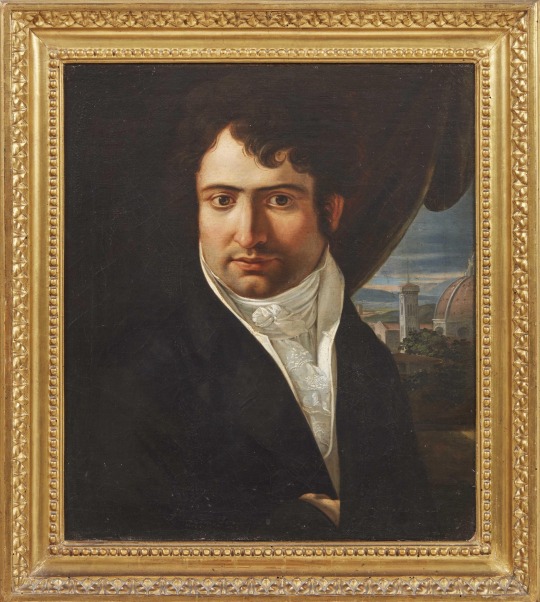
Jérôme all grown up during his Italy years
Portrait of Girolamo Bonaparte, by Pietro Benvenuti
The last of Napoleon’s brothers, born in [1784], Girolamo was a carefree and frivolous young man, often lacking prudence and moderation, who led a life of entertainment. In 1807 he married Catherine, daughter of King Frederick I of Württemberg, and was made king of Westphalia by his brother. After the fall of Napoleon, he left France to reside first in Vienna then in Trieste, Rome and Porto San Giorgio in the Marche. A widower since 1835, in 1840 he secretly married an Italian noblewoman, Giustina Pecori-Suárez (1811–1903), in Florence. Returning to Paris in 1848, he was appointed governor general of the Hôtel des Invalides, then Marshal of France in 1850, president of the Senate in 1851 and was reinstated with the title and honors of Imperial Prince in 1852. He died in 1860; his tomb is located in the cathedral of Saint Louis des Invalides next to Napoleon’s large sarcophagus.
(Source)
#I’m Jerome’s biggest defender#Pietro Benvenuti#Benvenuti#Jerome Bonaparte#Jérôme Bonaparte#Napoleon’s brothers#Napoleon’s family#Girolamo Bonaparte#pandolfini#Palazzo Ramirez-Montalvo#Firenze#Florence#art#Jerome#napoleonic era#napoleonic#first french empire#french empire#painting#portrait#cravat#1800s#19th century#auction#nell’asta Dal Rinascimento al primo ‘900 del 2 febbraio 2021
14 notes
·
View notes
Note
What were the appearances of Nicholas I's daughters? What were the physical characteristics of Maria, Olga and Alexandra? And who was the sister who was considered the most beautiful, majestic, and admired in Europe? And of course, which daughter of Nicholas and his wife Alexandra did he find most beautiful?
Hi! Here are a few firsthand accounts for you:
“The three princesses, Olga, Marie, and Alexandrine enchanted me more than any beauties have for a long time. They are surely the most beautiful creatures I've ever seen. Olga is really imperially proud--a great beauty; Alexandrine is the highest loveliness, delicacy, and grace. Marie is the least beautiful, but interesting and the most lively of the three.” —Robert Schumann
“Grand Duchesses Olga and Alexandra Nikolaevna were of such amazing beauty that, in my opinion, they had no rivals in the aristocratic world at that time.” — Count Mikhail Buturlin
“The Grand Duchess Olga Nikolaevna, beloved of all the Russians; it is indeed impossible to imagine a more lovely face, which would express such a degree of gentleness, kindness, and tolerance. She is very slim, her face translucent, and her eyes have that unusual sparkle which poets and lovers describe as heavenly […] The very youngest grand duchess, Alexandra […] still has something of the child in her; she is very lively and mischievous, and is promising to be the most beautiful of all the sisters.” — Dutch General Friedrich Gagern
“Little Marie is grace personified.” — Dowager Empress Maria Feodorovna of Russia
“She [Maria]was prettier, the butterfly had fluttered out of the cocoon. Her resemblance to Papa was now particularly pronounced, and in profile she seemed his miniature… She combined a strict classical face with lively facial expressions. Her forehead, nose, and mouth were completely regularly, her shoulders and chest were perfectly developed, and her waist was so slender that the band from her Greek coiffure would fit around it.— Queen Olga of Württemberg
“She [Maria] is a bit taller than me, a miniature as to features of her father... she is very lively, and has much frankness and abandon in her manner, & certainly is attractive.” — Queen Victoria
“My little Oline [Olga] is without question the most beautiful child you could hope to see.” — Dowager Empress Maria Feodorovna of Russia
“The Grand Duchess Olga, the second of the Emperor's daughters, has no rival in beauty amongst the princesses of Europe; and in this instance, flattery, in asserting her to be the loveliest girl in her father's dominions, scarcely outstrips the truth.” — Charles Frederick Hennigsen
“… a tall and slender blonde, a perfect beauty, with the profile of a cameo and big blue eyes. It was the middle daughter of the empress, Grand Duchess Olga Nikolaevna, subsequently the Queen of Wuerttemberg, one of the most beautiful women in Europe.” — A.I. Sokolova
“The answer to the ordinary vulgar question of which of the three grand duchesses (Maria, Olga, and Alexandra Nikolaevna) was most beautiful is very difficult to say, but in my opinion, the Grand Duchess Alexandra Nikolaevna stood above her sisters in this respect because her beauty was unearthly, like a creature doomed by Providence to leave this world in her youngest years.” — Prince Alexander Vasilyevich Meshchersky
“Alexia [Alexandra] is certainly a remarkable child, as beautiful as the day and so good.” — Dowager Empress Maria Feodorovna of Russia
“The three young Princesses were the most beautiful of all the family: Marie, her father's favorite, blonde with blue eyes and a delicate complexion, small, rather thin, recalling to mind the Great Catherine, not only by her fine profile, but also by certain traits in her spontaneous, impulsive, and sensual nature; Olga--a beautiful, noble, pale figure, slender and elegant, with a spiritual expression, and superb black hair framing the absolutely pure oval of her face; finally Alexandrine, the youngest, with a long neck and narrow chest, lively, teasing, a frail and fragile figure full of grace and childish gaiety, generally considered to be the living portrait of her mother.” — Constantine de Grunwald
“Mary is in the giraffe stage, is pale and thin, but has charming characteristics and will be a delightful individual; Olly has kept her kind of face but is getting thin and growing a lot; Adini is very small and very mischievous, but I do not think she is pretty in spite of others' opinions.” — Emperor Nicholas I of Russia (16 February 1828)
30 notes
·
View notes
Text

Antoinette, Duchess of Württemberg (1778-1824). By Jean-Augustin Ritt.
She was the second daughter of Francis, Duke of Saxe-Coburg-Saalfeld. In 1798, she married Alexander, Duke of Württemberg, a younger brother of Frederick I, King of Württemberg.
#jean augustin ritt#german aristocracy#house of Württemberg#house of saxe coburg saafeld#haus wettin#royalty#kingdom of württemberg
6 notes
·
View notes
Text
when: royally fun facts
They may not be fun, but some of them are made-up. Made up facts are in italics.
Grand Duchess Anastasia Mikhailovna of Russia
(Karolina Augusta's great-great-grandmother)
Is the granddaughter of Tsar Nicholas I of Russia
Is the mother of Alexandrine, Queen Consort of Denmark
Is the mother of Frederick Francis IV, Grand Duke of Mecklenburg-Schwerin
Is the mother of Cecilie, Crown Princess of Germany
Following the death of her husband, had a illegitimate son with her personal secretary
Three of her brothers were murdered by the Bolsheviks during the Russian revolution
Princess Karola of Urach
(Karolina Augusta's great-grandmother)
Karola’s father, Wilhelm Karl, 2nd Duke of Urach, was briefly elected as the King of Lithuania in 1918.
Princess Karola of Urach was the first queen consort of Mecklenburg, and also the last Grand Duchess of Mecklenburg-Schwerin and of Mecklenburg-Strelitz.
Karola was the grand-niece of Empress Elisabeth ‘Sisi’ of Austria.
Karola was the half-niece of Queen Elisabeth of the Belgians.
Karola half-first cousins include Leopold III of Belgium, and Marie José, the last Queen Consort of Italy.
Karola and Mary of Teck, Queen of the United Kingdom, both descend from morganatic branches of the House of Württemberg. Karola and Mary were third cousins as great-great-granddaughters of Friedrich II Eugene, Duke of Württemberg.
Karola was a Roman Catholic and retained her faith following her marriage to Heinrich Ludwig, though their children were brought up in the Evangelical Lutheran Church of Mecklenburg.
Duchess Thyra of Mecklenburg-Schwerin
(Karolina Augusta's grandmother)
Thyra’s father, Grand Duke Friedrich Franz IV of Mecklenburg-Schwerin, was overthrown by her father-in-law, King Heinrich Ludwig of Mecklenburg
Thyra was the first Crown Princess of Mecklenburg (1939 - 1954)
Thyra was the second Queen of Mecklenburg (1954 - 1980)
Thyra was the niece of Alexandrine, Queen of Denmark (1912 - 1947)
Thyra was the first cousin of Frederik IX of Denmark (1947 - 1972)
Thyra was the niece of Cecilie, Crown Princess of Germany (1905 - 1951)
Thyra was the first cousin of Louis Ferdinand, Prince of Prussia (1951 - 1994)
Thyra was the niece of Marie Louise, Margravine of Baden (1928 - 1929)
Thyra was the first cousin of Berthold, Margrave of Baden (1929 - 1963), who married Princess Theodora of Greece and Denmark (the older sister of Prince Philip, Duke of Edinburgh)
Thyra was the niece of Ernest Augustus, Duke of Brunswick (1913 - 1918) and head of the House of Hannover (1923 - 1953)
Thyra was the first cousin of Ernst August, Hereditary Prince of Brunswick, Prince of Hanover (1953 - 1987)
Thyra was the first cousin of Frederica, Queen of Greece (1947 - 1964)
Princess Eleonora of Leiningen
(Karolina Augusta's mother)
Descends from all three children of Victoria of Saxe-Coburg-Saalfeld: Carl, 3rd Prince of Leiningen; Princess Feodora of Leiningen; and Queen Victoria of the United Kingdom.
Queen Karolina Augusta I of Mecklenburg
Is the first female ruler in Mecklenburg’s 900 year history.
Will be the final ruler from the House of Mecklenburg which will eventually bring an end to the House’s status as the longest still reigning house in European history.
Is descended from both Queen Victoria of the United Kingdom, and of King Christian IX of Denmark.
Has been the youngest monarch in the world since 1992.
Has 15 godparents:
HRH Princess Cecilie Auguste, Duchess of Ludwigslust (paternal aunt)
HRH Princess Marie Anastasia, Duchess of Grevesmühlen (paternal aunt)
HRH Princess Benedikte of Denmark (paternal second cousin once removed)
HRH Princess Alexandra of Hanover, Princess of Leiningen (maternal aunt-by-marriage)
HSH Princess Margarita of Hohenlohe-Oehringen, Princess of Leiningen (maternal aunt-by-marriage)
HM Silvia, Queen of Sweden (family friend)
HM Queen Beatrix of the Netherlands (paternal and maternal second cousin twice removed)
HRH Princess Astrid of Belgium, Archduchess of Austria-Este (paternal third cousin once removed)
HRH Prince Charles, Prince of Wales (paternal third cousin once removed and family friend)
HRH Prince Frederik, Crown Prince of Denmark (paternal third cousin)
HH Prince Harald of Denmark (paternal first cousin once removed)
HSH Prince Hermann Friedrich of Leiningen (maternal first cousin once removed)
HRH Prince Felipe, Prince of Asturias (paternal third cousin)
HH Borwin, Duke of Mecklenburg-Strelitz (distant cousin and family friend)
HSH Hans-Adam II of Liechtenstein (distant cousin and family friend)
0 notes
Photo

C.A. Mathilde [and] Friedrich
c.1800-16.
4 notes
·
View notes
Photo

Duke Frederick I of Württemberg and Sibylla of Anhalt (centre), with their ten children (out of fifteen) who survived to adulthood. They were married in 1581, and their first child was born the following year. Sibylla would give birth to another child every year after that, until their 15th child, Anna, was born in 1597.
Pictured are 5 sons: Johann Frederick, Ludwig Frederick, Julius Frederick, Frederick Achilles and Magnus (top left downwards), and 5 daughters: Sibylla Elisabeth, Eva Christina, Agnes, Barbara and Anna (top right downwards).
#Sibylla of Anhalt#frederick i#agnes of Württemberg#barbara of Württemberg#anna of Württemberg#sibylla elisabeth of Württemberg#eva christina of Württemberg#johann frederick of Württemberg#ludwig frederick of Württemberg#julius frederick of Württemberg#frederick achilles of Württemberg#magnus of Württemberg#long live the queue
13 notes
·
View notes
Note
Were there any lgbtq+ kings/queens? I am a bit curious because I know people werent accepting back them, and was there any punishment for it?
Yes and there plenty of them. Most royals were not prescuted for being LGBTQ+ as they were above the standard of regular classes, however most were private and did not openly come out as LGBTQ+. Usually as long as they were discreet, people looked the other way.
Queen Anne (alleged had lesbian affairs, evidence is shaky)
Philippe d'Orleans (openly gay Prince living with his long-term lover, the Chevalier de Lorraine)
Edward II (had male lovers)
Richard I of England (allegedly slept with the French King)
Philip II of France (allegedly slept with Richard I of England)
Prince George, Duke of Kent (allegedly bisexual)
Marie Antoinette (allegedly had affairs with two ladies in waiting though evidence is shaky)
William II of England (had male lovers)
Richard II of England (may have been bisexual)
Emperor Hadrian
Emperor Nero
Emperor Tiberius
Henri III of France (allegedly gay)
James I & VI (had affairs with both men and women but kept it private)
Alexander the Great (was openly bisexual)
Princess Isabella of Parma (was allegedly in love with her sister in law)
Emperor Ai of Han (openly gay)
Christina, Queen of Sweden (had lesbian affairs)
Charles I of Württemberg (had an affair with an American gentleman)
Frederick the Great (allegedly had male lovers, one of which was executed)
103 notes
·
View notes
Text
Wednesday 7 February 1838
8
11 ¾
a little snow during the night – hazy morning but fair – F30° at 8 and 31° at 9 am Read over Mr. Bull’s receipt that came yesterday afternoon breakfast at 9 ¼ to 10 A- having read aloud a little of Lardners’ history of Russia vol. 1 – George Thomas went early this morning to Thomas Greenwood for deals for tubbing Listerwick pit and took back Holts’ hand-pump no! did not take it back – and brought back from Whitley’s the parcel of periodicals that Samuel forgot last night – sat from 10 to 3 55 sufficiently for the time examining the contents of the parcel – cut open and read in the architectural journal (vol. 5 n°48) interesting article on the mountain cottage architecture of Switzerland – and skimmed the criticisms and the article at 90p. on the at Munich et seq. – and interesting article on asphaltic mastic - vid. p. 8 useful work – Dictionary – ‘glossary of terms used in Grecian Roman Italian and Gothic architecture’ – cut open and then read in the translations of the geological society p. 243 et seq. Lyll on the stratification of the Danish Islands of [Iceland] and Møn and skimmed the volume – then read in the gentlemans’ magazine p. 171 (vol. 9 n°2) favorite critique on Londons’ architectural magazine vid. n°43 and 46 on Roman (Italian) places – then read with great interest in Quarterly Review n°121 1st article 38 pages on praise and censure – much for anterie p. 7 on the Galerie historique de Versailles – vid. p. 31 account of the statue of Joan of Arc by the princess Marie now married to the duke Alexander of [Württemberg] – high praise of this statue vide – then read article 4 from p. 96 to 122. Moorcrofts’ travels in the Himalayan Districts – very interesting tho’ undertaken in 1819 edited by professor Wilson, M.A. F.R.S. vid. on the Deodar pine pp. 105, 107, 118 – then read article 6 merited condemnation of Lady Charlotte Campbells’ (no Bury) ‘Diary of the times of George IV’ copyright sold to Mr. Colburn for £1000 – p. 164 ‘the result of the whole is, that we have no doubt that the unhappy Princess was really insane’ – the [rever] styles this infamous work ‘the most scandalous publication – we do not except those of Mrs. Manly, George Anne Bellamy,
SH:7/ML/E/21/0039
‘on Harriet Wilson – that has ever disgraced English, or, as far as we know, European literature’ – then read article 7 from. 164 to 203, on the life of Wallenstein duke of Friedland, by Frederick Foster and ditto by Lieutenant colonel Mitchell – the latter in 8vo London 1837 – an apparently sound vindication of the character of [?] – from treason towards the Emperor Ferdinand ii – Schilles’ authority respecting W- well impugned – vid. – A- rode off to Cliff Hill at 2 having just come to me for a minute or 2 before she went – about 3 pm somebody called for the paper prospectus (I know not what I scarcely looked into it) left here yesterday afternoon respecting the Establishment of a horticultural society here – I merely told Edward to say that I did not like my garden entering into societies of this kind – he had other things to do – from 4 to 4 40 wrote all the above of today – besides the paper about the projected horticultural society brought here yesterday afternoon Mr. Bull also sent by one of his young man his Report respecting the meer and Listerwick water wheel – just read it over this morning before breakfast – he now thinks there would be water for 4 pair of stones or 22 ½ horse power for 5 ¼ hours per day, and that a corn or fulling mill (if the quality of the water suited the latter) would be the best manner of using the power – thinks the present clow sufficient – all this must considered – no corn mill – A- just returned now at 4 ¾ - a little while with John in the brew house (going to brew tomorrow) and about – then to Listerwick – Mangnall has had hard work pulling water all the day – has done very well – the middle band very close and hard – no water in it – not a seam in the stone – then went to ask John Oates if he had a cottage at liberty – no! – stood talking ½ hour or more – J.O. hears Stocks has bid £12000 for Quarry house state coal, engine, loose and all as it stands – then at the pit a few minutes again – told Joseph Mann to tell Hartley I wished very much he would get another cottage – I wanted his to put the pump-pipes in – came in at 6 40 – 10 minutes in the tower and looking about – the water comes in to the red room passage near the window and into the library passage under the window – terrible – desired Oddy to tell Sam Booth to go very early in the morning and desire Booth to come – dressed – dinner at 7 to 8 – tea – read the newspaper – A- read French – long note took ½ hour – then read from p. 143 to 159 vol. 2 Cochranes’ journey – and came upstairs at 10 20 at which hour F36° - thaw this afternoon – the fog of the morning succeeding by damp and light rain part of this afternoon – fair but thawing as I returned tonight, and nearly fair when I went out – A- came to me for about ½ hour till 11
5 notes
·
View notes
Text

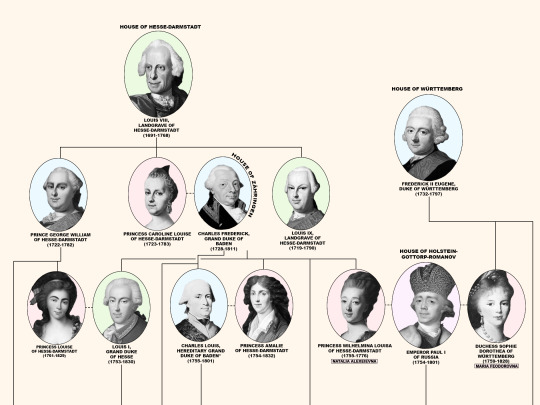




How the last Russian Dynasty were related to European Monarchies (current and former):
The House of Schleswig-Holstein-Sonderburg-Glücksburg (Royal Dynasty of Denmark) and the House of Holstein-Gottorp-Romanov (Imperial Dynasty of Russia) were more commonly related, their ancestors being Louis VIII, Landgrave of Hesse-Darmstadt, Frederick Eugene II, Duke of Württemberg, Emperor Paul I of Russia, King Christian X of Denmark, and Queen Victoria of the United Kingdom.
18 notes
·
View notes
Photo
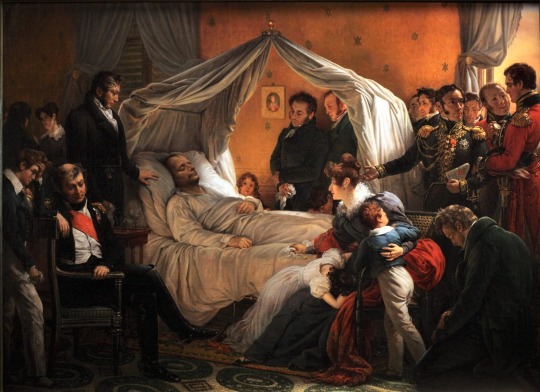
Vivant, il a manqué le monde ; mort, il le possède.
- François René de Chateaubriand (1768-1848), Vie de Napoléon, livres XIX à XXIV des Mémoires d’outre-tombe (posthume)
Of course we don’t have any photograph or film of Napoleon’s death on 5 May 1821 on Saint Hélène. But we do have the next best thing: a painting. Charles de Steuben depiction of Napoleon's deathbed and his faithful entourage that served as witnesses to his dying moments became the one of the most important paintings of the post-Napoleonic era but then faded from modern memory.
I first came across it by accident when I was in my teens at my Swiss boarding school. There were times I found myself with school friends going away on hiking trips around the high Alpine chain of the Allgäu Alps and we would drive through Lake Constance to get there, or we would hike around the Lake itself through the Bodensee-Rundwanderweg.
Perched high above Lake Constance and nestled in large parklands, stood Schloss Arenenberg which overlooks the lower part of Lake Constance. At first, it appears a relatively modest country house. But this was no usual pretty looking house. Arenenberg was owned by well-heeled families before it was sold to Hortense de Beauharnais, the adopted daughter and sister-in-law of the French Emperor himself, Napoleon Bonaparte. She had it rebuilt in the French Empire style and lived there from 1817 with her son Louis Napoleon, later Emperor Napoleon III, who is said to have spoken the Thurgau dialect in addition to French. This elegantly furnished castle then was once the residence of the last emperor of France.
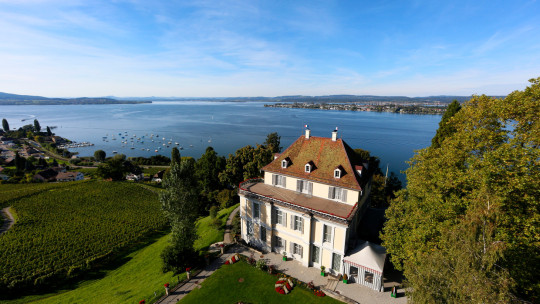
The alterations made first by Queen Hortense and later by Empress Eugénie have been carefully preserved and the house still bears the marks of both women. Queen Hortense's drawing room is perfectly preserved and visitors can still admire her magnificent library (all marked with the Empress' cipher) containing over one thousand books. Likewise, in the room where the queen died, every object has been maintained in its original condition: pieces of furniture and personal belongings are gathered here to evoke her memory in a very touching manner. As for Empress Eugénie's rooms, they too have been very carefully preserved. Her private drawing room is a perfect illustration of the Second Empire style with sculptures by Carpeaux and portraits of the imperial family by Winterhalter.
After 1873, the Empress and the Imperial Prince brought the palace back to life by making regular summer visits, which they continued until 1878. However, on the tragic death of her son in 1879, Eugénie found it difficult to return to a place so full of painful memories. And so in 1906 she donated the estate to the canton of Thurgovie as a testimony of her gratitude for the region's faithful hospitality towards the Napoleon family. And in accordance with the Empress' wishes, the residence was turned into a museum devoted to Napoleon.
In what is now the Napoleonic Museum, the original furnishings have been preserved, and the palace gardens had been fully restored. This in itself might be worth a visit for the view over Lake Constance which is stunning. For Napoleonic era buffs though its the incredible art collection which is its real treasure. It houses an important art collection including works by the First-Empire artists Chinard Canova, Gros, Robert Lefèvre, Gérard, Isabey and Girodet-Trioson, and by the Second-Empire painters and sculptors Alfred de Dreux, Winterhalter, Carpeaux, Meissonier, Hébert, Flandrin, Detaille, Nieuwerkerke and Giraud.
But what caught my eye was this painting, ‘La Mort de Napoléon’ by Charles de Steuben. I didn’t know anything about it or the artist for that matter, but one of my more erudite school friends who, being French, was into Napoleonic stuff in a huge way, and she explained it all to me. Of course I knew a fair bit about Napoleon growing up because my grandfather and father, being military men themselves, were Napoleonic warfare buffs and it rubbed off onto me. I just knew about Napoleon the military genius. I never thought about him once he was beaten at Waterloo in 1815. So I never really engaged with Napoleon the man. And yet here I was staring at his last breath of mortality caught forever in time through art. Not for the first time I had mixed feelings about Napoleon Bonaparte, both the man and the myth (built up around him since his death).
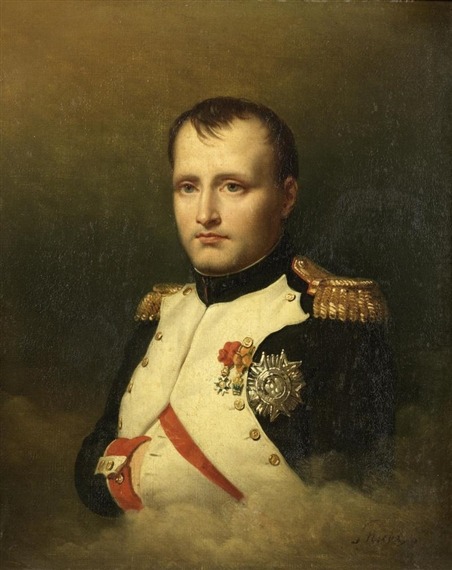
On 5 May, 1821, at 5.49pm in Longwood House on the remote island of St Helena, in the words of the famed French man of letters, François-René de Chateaubriand, ‘the mightiest breath of life which ever animated human clay’ came no more. To the British, Dutch, and Prussian coalition who had exiled Naopleon Bonaparte there in 1815, he was a despot, but to France, he was seen as a devotee of the Enlightenment.
In the decade following his demise, Napoleon’s image underwent a transformation in France. The monarchy had been restored, but by the late 1820s, it was growing unpopular. King Charles X was seen as a threat to the civil liberties established during the Napoleonic era. This mistrust revived Napoleon’s reputation and put him in a more heroic light.
Fascination with the French leader’s death led Charles de Steuben, a German-born Romantic painter living in Paris, to immortalise the momentous event. Steuben’s painting depicts the moment of Napoleon’s death and seeks to capture the sense of awe in the room at the death of a man whose legendary career had begun in the French Revolution. It was this, ultimate moment that Steuben wished to immortalise in a painting which has since become what could almost be described as the official version of the scene.

There is no question that Steuben’s painting became the most famous and most iconic depiction of Napoleon’s death in art history. In another painting, executed during the years 1825-1830, Steuben was to give a realistic view of the emperor dictating his memoirs to general Gourgaud. This same realism also pervades his version of Napoleon’s death, and it is totally unlike Horace Vernet’s, Le songe de Bertrand ou L’Apothéose de Napoléon (Bertrand’s Dream or the apotheosis of Napoleon) which, although painted in the same year, is an allegorical celebration of the emperor’s martyrdom and as such the first stone in the edifice of the Napoleonic legend.
And what a legend Napoleon’s life was turned into for time immemorial. Napoleon declared himself France’s First Consul in 1799 and then emperor in 1804. For the next decade, he led France against a series of European coalitions during the Napoleonic Wars and expanded his empire throughout much of continental Europe before his defeat in 1814. He was exiled to the Mediterranean island of Elba, but he escaped and briefly reasserted control over France before a crushing final defeat at the Battle of Waterloo in 1815.
Napoleon’s military prowess earned him the fear of his enemies, but his civil reforms in France brought him the respect of his people. The Napoleonic Code, introduced in 1804, replaced the existing patchwork of French laws with a unified national system built on the principles of the Enlightenment: universal male suffrage, property rights, equality (for men), and religious freedom. Even in his final exile on St. Helena, Napoleon proved a magnetic presence. Passengers of ships docked to resupply would hurry to meet the great general. He developed strong personal bonds with the coterie who had accompanied him into exile. Although some speculate that he was murdered, most agree that Napoleon’s death in 1821, at the age of 51, was the result of stomach cancer.
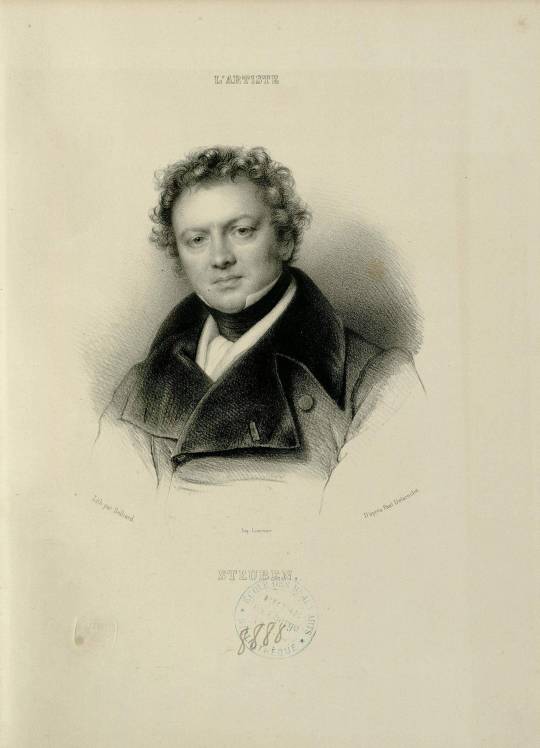
By contrast, Charles de Steuben was born in 1788, his youth and artistic training coinciding with Napoleon’s rise to power. He was the son of the Duke of Württemberg officer Carl Hans Ernst von Steuben. At the age of twelve he moved with his father, who entered Russian service as a captain, to Saint Petersburg, where he studied drawing at the Art Academy classes as a guest student. Thanks his father's social contacts in the court of the Tsar, in the summer of 1802 he accompanied the young Grand Duchess Maria Pavlovna of Russia (1786–1859) and granddaughter of Frederick II Eugene, Duke of Württemberg, to the Thuringian cultural city of Weimar, where the Tsar's daughter two years later married Charles Frederick, Grand Duke of Saxe-Weimar-Eisenach (1783–1853). Steuben, then fourteen years old, was a Page at the ducal court, a position for which the career prospects would be in the military or administration. The poet Friedrich Schiller was a family friend who at once recognised De Steuben's artistic talent and instilled in him his political ideal of free self-determination regardless of courtly constraints.
At the behest of Pierre Fontaine in 1828 de Steuben painted La Clémence de Henri IV après la Bataille d'Ivry, depicting a victorious Henry IV of France at the Battle of Ivry. De Steuben's Bataille de Poitiers, en octobre 732, painted between 1834 and 1837, shows the triumphant Charles Martel at the Battle of Tours, also known as the Battle of Poitiers. He painted Jeanne la folle around the same time and he was commissioned by Louis Philippe to paint a series of portraits of past Kings of France.
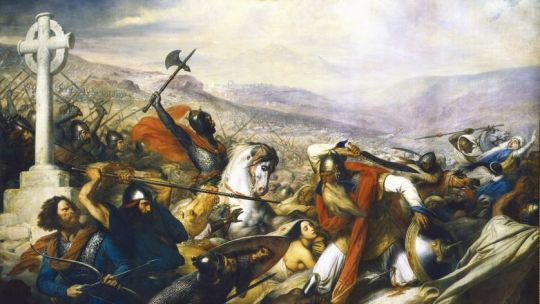
Life in the French capital was a repeated source of internal conflict for Steuben. The allure of bohemian Paris and his military-dominated upbringing made him a wanderer between worlds. As an official commitment to his adopted country he became a French citizen in 1823. However, the irregularity of his income as a freelance artist was in contrast to his sense of duty and social responsibility. To secure his family financially, he took a job as an art teacher at École Polytechnique, where he briefly trained Gustave Courbet. In 1840 he was awarded a gold medal at the Salon de Paris for his highly acclaimed paintings.
The love of classical painting was a lifelong passion of Steuben. He was a close friend to Eugène Delacroix, the leader of the French Romantic school of painting, whom he portrayed several times. Steuben was also part of this artistic movement, which replaced classicism in French painting. "The painter of the Revolution," as Jacques-Louis David was called by his students, joined art with politics in his works. The subjects of his historical paintings supported historical change. He painted mainly in sharp colour contrasts, heavy solid contours and clear outlines. The severity of this style led many contemporary artists - including Prud'hon - to a romanticised counter movement. They preferred the shadowy softness and gentle colour gradations of Italian Renaissance painters such as Leonardo da Vinci and Antonio da Correggio, whose works they studied intensively. Steuben, who had begun his training with David, felt the school was becoming increasingly rigid and dogmatic. Critics praised his deliberate compositions, excellent brush stroke and impressive colour effects. But some of his critics felt that his pursuit of dramatic design of rich people also showed, at times, a pronounced tendency toward the histrionic.
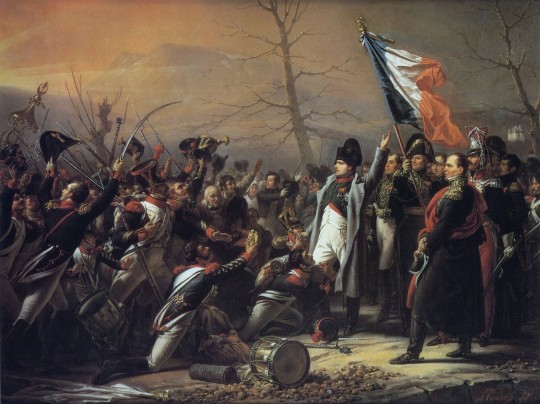
The portrayal of key moments in Napoleon’s dramatic military career would feature among some of Steuben’s best known works. But it is this death scene that Steuben is most remembered for.
Using his high-level contacts among figures in Napoleon’s circle, Steuben interviewed and sketched many of the people who had been present when Napoleon died at Longwood House on St. Helena. He wanted to attempt o give the most accurate representation of the scene possible. Indeed, the painter interviewed the companions of Napoleon’s captivity on their return to France and had them pose for their portraits. Only the Abbé Vignali, captain Crokat and the doctor Arnott were painted from memory. The Grand maréchal Bertrand made sketches of the plan of the room, noting the positions of the different pieces of furniture and people in the room. All the protagonists within the painting brought together some of their souvenirs and in posing for the painter, each person can be seen contributing to a work of collective memory, very much with posterity in mind.
Painstakingly researched, Steuben painted a carefully composed scene of hushed grief. Notable among the figures are Gen. Henri Bertrand, who loyally followed Napoleon into exile; Bertrand’s wife, Fanny; and their children, of whom Napoleon had become very fond.
The best known version of “La Mort de Napoléon” was completed in 1828. French writer Stendhal considered it “a masterpiece of expression.” In 1830 the installation of a more liberal monarchy in France further boosted admiration of Napoleon, who suddenly became a wildly popular figure in theatre, art, and music. This fervour led to the diffusion of Steuben’s deathbed scene in the form of engravings throughout Europe in the 1830s. As Napoleon’s stock arose within French culture and arts, so did Steuben’s depiction of Napoleon’s death. It became a grandeur of vision that permeated Steuben’s masterpiece of historical reconstruction.
Initially forming part of the collection of the Colonel de Chambrure, the painting was put up for auction in Paris, on 9 March 1830, with other Napoleonic works, notably Horace Vernet’s Les Adieux de Fontainebleau (The Fontainebleau adieux) and Steuben’s Retour de l’île d’Elbe (The return from the island of Elba). The catalogue noted that the painting had already been viewed in the colonel’s collection by “three thousand connoisseurs” – which alone would have made it a success -, but its renown was to be further amplified by the production of the famous engraving. The diffusion of this engraving by Jean-Pierre-Marie Jazet (1830-1831, held at the Musée de Malmaison), reprinted and copied countless times throughout the 19th century, made the scene a classic in popular imagery, on a level of popularity with paintings such as Millet’s Angelus.
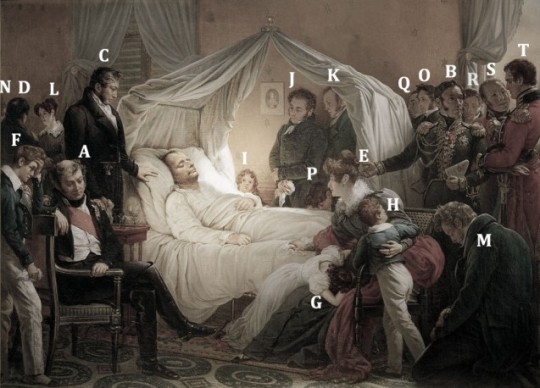
A / Grand Marshal Henri-Gatien Bertrand. Utterly loyal servant of Napoleon’s to the last. His memoirs of the exile on St Helena were not published until 1849. Only the year 1821 has ever been translated into English.
B / General Charles Tristan de Montholon. Courtier and companion of Napoleon’s exile. Montholon managed to ease Bertrand out and become Napoleon’s closest companion at the end, highly rewarded in Napoleon’s will, which Montholon helped write. Montholon’s untrustworthy memoirs were published in 1846/47.
C / Doctor Francesco Antommarchi. Corsican anatomy specialist. Sent by Napoleon’s mother from Rome to St Helena to be Napoleon’s personal physician on the expulsion of Barry O’Meara. Napoleon disliked and distrusted Antommarchi. Antommarchi’s untrustworthy memoirs were very influential and published in 1825.
D / Angelo Paolo Vignali, Abbé. Corsican assistant-chaplain, sent by Madame Mère from Rome to St Helena in 1819.
E / Countess Françoise Elisabeth “Fanny” Bertrand and her children: Napoléon (F), who carried the censer at Napoleon’s funeral; Hortense (G); Henry (H); and Arthur (I), youngest by six years of all the Bertrand children and born on the island. She was wife of the Grand Marshal, very unwilling participant in the exile on St Helena. Her relations with Napoleon were difficult since she refused to live at Longwood. She spoke fluent English. Was however very loyal to Napoleon.
J / Louis Marchand. Napoleon’s valet from 1814 on and one of his closest servants. As Napoleon noted in his will, “The service he [Marchand] rendered were those of a friend”.
K / “Ali”, Louis Étienne Saint-Denis. Known as “the Mamluk Ali”, one of Napoleon’s longest-serving and intimate servants; He became Librarian at Longwood and was an indefatigable copyist of imperial manuscripts.
L / Ali’s English (Catholic) wife, Mary ‘Betsy’ Hall. She was sent out from England by UK relatives of the Countess Bertrand to be governess/nursemaid to the Bertrand children. Married Ali aged 23 in October 1819.
M / Jean Abra(ha)m Noverraz. From the Vaud region in Switzerland. Very tall and imposing figure that Napoleon called his “Helvetic bear”. He was himself ill during Napoleon’s illness.
N / Noverraz’s wife, Joséphine née Brulé. They married in married in July 1819, and she was the Countess Montholon’s lady’s maid. Noverraz and Saint-Denis had a fist fight for the hand of Joséphine.
O / Jean Baptiste Alexandre Pierron. The cook, dessert specialist, long in Napoleon’s service and who had accompanied Napoleon to Elba.
P /Jacques Chandelier. Iincorrectly identified on the picture as Santini who had left the island in 1817. A cook, from the service of Pauline Bonaparte, Napoleon’s sister, who arrived on St Helena with the group from Rome in 1819.
Q /Jacques Coursot. Butler, from the service of Madame Mère, Napoleon’s mother, he arrived on St Helena with the group from Rome in 1819.
R / Doctor Francis Burton. Irish surgeon in the 66th regiment who had arrived on St Helena only on 31st March 1821. He is renowned for having made Napoleon’s death mask (with ensign John Ward and Antommarchi).
S/ Doctor Archibald Arnott. Surgeon in the 20th regiment. Brought in to tend to Napoleon in extremis on 1 April 1821.
T/ Captain William Crokat. A Scot, orderly officer at Longwood for less than a month, having replaced Engelbert Lutyens on 15 April. He received the honour of carrying the news of Napoleon’s death back to London and also the reward, namely, a promotion and £500, privileges of which Lutyens was deliberately deprived by the governor.
#charles de steuben#art#painting#napoleon#bonaparte#st helena#life#death#chateaubriand#french#france#emperor#artist#aesthetics#war#politics#society#culture#arts#personal
38 notes
·
View notes
Photo

Christina Robertson (Scottish, 1796 - 1854): Portrait of Grand Princesses Olga Nikolayevna and Alexandra Nikolayevna (1840) (via The State Hermitage Museum)
From the museum website:
The work of Scottish painter Christina Robertson is very much the product of the Victorian age in Britain. The moralizing and sentimental tone which dominated British society and arts was, however, fully in keeping with the tastes of the Russian aristocracy. Robertson's main clients in St Petersburg came from the family of the Emperor Nicholas I, and their example led many others to follow suit in giving her commissions. Christina Robertson was an extremely talented miniaturist, which influenced even her larger works, as in this intimate portrait of Nicholas's daughters Olga and Alexandra. The clients liked the truthful depiction of rich silks, of the transparency of glass and the fragility of flowers. The open idealization of the sitters and the replacement of real feeling with sugary sentiment allowed stricter critics to speak of Robertson's "flattering brush". Nonetheless, she remained one of the most popular and highly paid portrait painters in Russia in the 1840s. Grand Princess Olga Nikolayevna (1822-1892), from 1846 wife of Charles Frederick Alexander, Prince of Württemberg, is depicted sitting at the clavecin. Standing next to her is Grand Princess Alexandra Nikolayevna (1825-1844), from 1843 wife of Frederick George Adolphus, Prince of Hesse-Cassel.
#Christina Robertson#scottish painters#british painters#women artists#women painters#portrait#nineteenth century#art#painting
92 notes
·
View notes